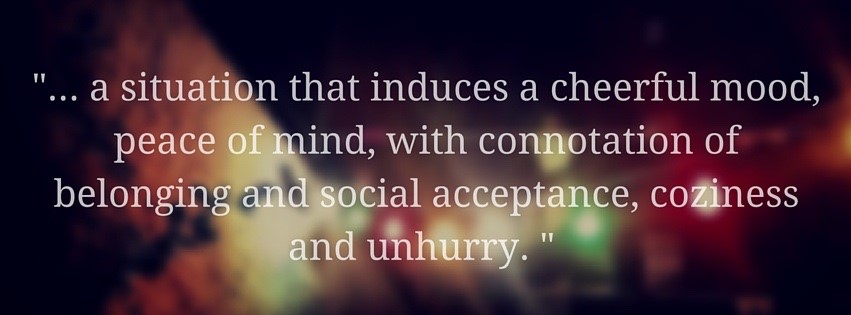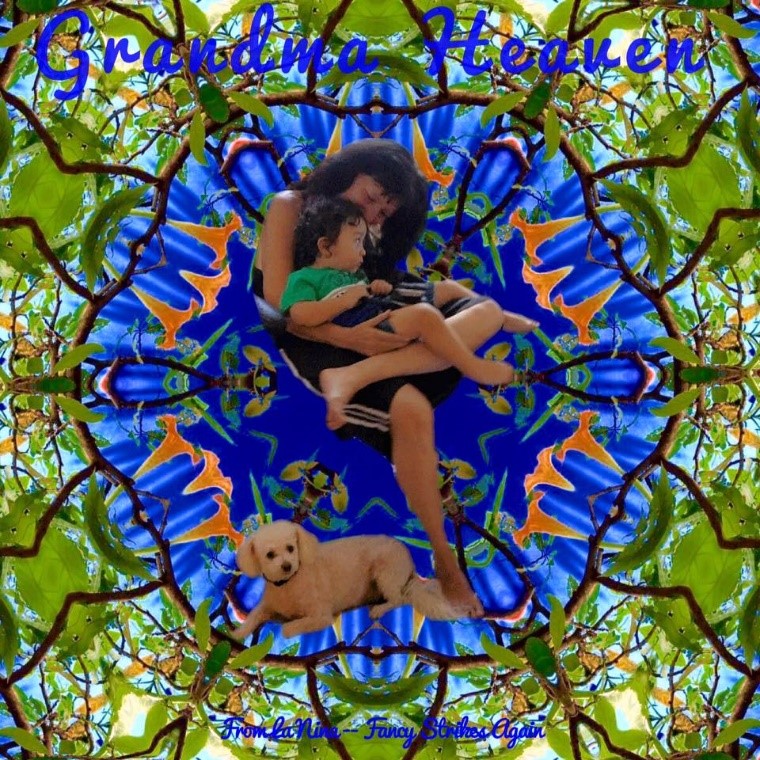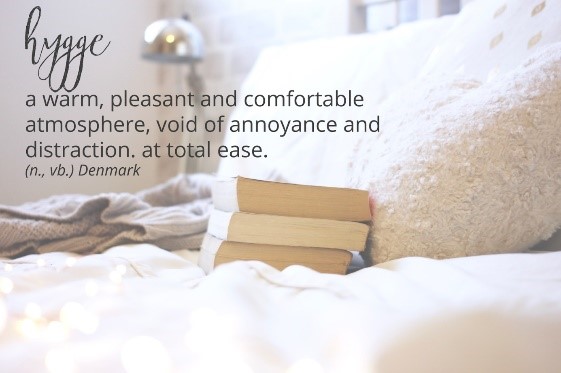 I’d never seen the word before I caught this exchange about Bastian, one of my favorite Flickr cats, napping:
I’d never seen the word before I caught this exchange about Bastian, one of my favorite Flickr cats, napping:
Petra Wendeler from Germany commented: “Oh, this is so ‘hyggelig’! A few days ago I read an article about new words establishing in the German language. Hyggelig is one of the new catchphrases. Isn’t that interesting? I think ‘hyggelig’ is a great expression and it is so close to the German ‘gemütlich’ which means about the same.
Bastian’s owner Finn Frode of Hoje Tastrup, Hovedstaden, Denmark responds: “Petra — you are quite right. Bastian is a very ‘hyggelig’ cat. We have borrowed the word ‘gemytlig’ from German and that fits him as well :)”
(Flickr is all about the cats, for me, and joyous souls like Finn who love cats, his cats, his garden, his family, and all things sweet and pretty.)
I love words. I love language and languages. My mom played Scrabble with me from near toddlerness and it stuck. I’m an English major, still, a proud grammar nerd. I’ve studied comparative structural linguistics and remain fascinated with the mechanics of language acquisition. I am a lexophile.
My brain smiles to think about words that can’t be translated into English, such as hyggelig and gemütlich. I found these two words related to my cozy Bastian research in this delightful blog post on a language learning site: 20 of the World’s Most Beautiful Untranslatable Words ~
- Hyggelig
Danish
This Danish word refers to a warm, friendly, cozy, delightfully intimate moment or thing. It gives off imagery of a candlelit winter evening at home with warm blankets and maybe a bit of alcohol. While there are similar words in German (gemütlichkeit), Swedish (gemytlig) and Norwegian (hyggelig), there is no direct translation in English.
- Gezelligheid
Dutch
This Dutch word can be associated with the Danish concept of hyggelig and the German concept of gemütlichkeit, although its definition depends on the context. Gezelligheid refers to a convivial, cozy, or warm atmosphere, but can also refer to the warmth of being with loved ones, the feeling of seeing a friend after a long absence, or a general togetherness that provides a feeling of warmth. Many consider it the word that most closely encompasses the heart of Dutch culture.
The Language of Tea: From Gezelligheid to Elevenses by Carrie Keplinger on Plum Deluxe: Making Moments Matter explains it thusly:
Stay Cozy, My Friends
When we invite someone to tea — or are invited ourselves — the atmosphere we most want our guests to feel is one of warmth, coziness, and good cheer. We want our gatherings to facilitate feelings of friendliness, of acceptance and belonging.
In English, it’s somewhat difficult to sum up all of those things in one word (you’ll notice we just used around seven words to describe it), but other cultures have no such problem. There are words for this concept in multiple languages including:
gezelligheid (Dutch), gemütlichkeit (German), gemytlig (Swedish), hyggelig (Danish), comhluad (Irish), and arhat and huzur (Turkish).
Here’s what Wikipedia says regarding these linguistic equivalencies:
English has no direct translation for Gemütlich or Gemütlichkeit. Cosy captures an element of it but crucially lacks those of friendliness and belonging.
The Swedish language equivalent is gemytlig, deriving directly from the German word and sharing its meaning.
The Danish also has gemytlig but uses hygge [ˈhyɡə] (hyggelig as an adjective) instead. Likewise, in Norwegian the word translates into “hyggelig,” but the meaning is closer to the word “koselig“ which means cozy, comfortable, nice, or pleasant. The Dutch equivalent “gezelligheid“ has broader social connotations than the German Gemütlichkeit and can be more accurately compared to the Danish “hygge.”
In Bulgarian, the word is commonly translated as уют [oˈjut] and [ʊˈjut] in Russian, which means cosiness, comfort, contentment, ease, and carries almost identical connotations as the German word.
The Romance languages with Latin roots do not have a single term expressing the many connotations of Gemütlichkeit: In French on se sent vraiment bien ici, se mettre à son aise, agréable, sympathique are equivalents in terms of the social aspects. In Italian, comodità, aria di casa, tranquillità, familiarità and cordialità in reference to people might be used. In Spanish agradable (agreeable), acogedor (inviting), cómodo (comfortable), or bonachón in reference to a person would be used, and almost identical equivalents in Portuguese.
In Turkish two words, rahat and huzur, are used for Gemütlichkeit. The words come from Arabic راحة rāḥa and حضور ḥūḍūr, respectively meaning “rest” and “presence (of mind).”
In Thai the nearest equivalent is ความผาสุก (rtgs: khwamphasuk) meaning peace, well-being, freedom from annoyance.
Contrary to the lede in this thorough romp What Is Hygge? Everything You Need To Know About The Danish Lifestyle Trend from Country Living, before cozy Bastian, I had no idea!
We’re sure you’ve come across the word in the past few months, but what in the world is hygge exactly? First let’s start with how you say it.
Pronounced “hoo-ga,” this Danish concept cannot be translated to one single word but encompasses a feeling of cozy contentment and well-being through enjoying the simple things in life. If you’ve ever enjoyed reading a book indoors on a rainy Sunday or a cup of hot cocoa on a snow day you’ve experienced hygge without even knowing it. Hygge is such an important part of being Danish that it is considered “a defining feature of our cultural identity and an integral part of the national DNA,” according to Meik Wiking, the CEO of the Happiness Research Institute in Copenhagen. “In other words, what freedom is to Americans. . . hygge is to Danes,” Wiking says in his new book The Little Book Of Hygge. This national obsession with all things cozy is credited as one of the reasons why Denmark is always at the top of the list of the world’s happiest countries, despite their infamously miserable winters. Now the rest of the world is beginning to catch on to this wonderful way of life.
The basics. Similar to the German concept of gemütlichkeit and the Dutch idea of gezelligheid, the warm and cozy lifestyle that hygge promotes has been a key part of Danish culture since the early 1800s when the word first appeared in the written language (it’s derived from a Norwegian word for “well-being”). While hygge—which is used as both a noun and adjective in Denmark—is more of a way of life for Danes, it caught on as a lifestyle trend in the UK in 2016 after several books about the topic were published. It became so popular in Britain that it was even included in the Collins Words of the Year for 2016—second only to Brexit. Now it’s America’s turn to go ga-ga for hygge. Everyone from The New York Times to The New Yorker has covered it and no fewer than eight books have been published in the last few months about the topic. It’s trending on social media too. Pinterest predicted it will be one of the hottest home decor trends of 2017 after activity on the site about “hygge” increased 285 percent at the end of 2016. People have tagged over 1.5 million posts on Instagram with #hygge and have also taken to Twitter to discuss the finer points of what makes something hygge or not.
From Upworthy, Lori White’s 5 ways gemütlichkeit could help us find more unhurried happiness in our lives is a totally worthwhile read on the topic:
German blogger Constanze describes it: “A soft chair in a coffee shop might be considered ‘cosy’. But sit in that chair surrounded by close friends and a hot cup of tea, while soft music plays in the background, and that sort of scene is what you’d call gemütlich.”

Here are Lori White’s five action items:
1. Social isolation is a real thing.
Loneliness is real. And it’s a bummer! Gemütlichkeit is about cultivating environments where people can get closer to each other, in person! With modern life and modern technology bringing us further and further from each other in real life…
2. By naming this vibe, we can cultivate it!
This is perhaps the most simple, but the most profound. Not all who wander are lost, but it helps to know the name of what you’re looking for if you’re looking for it.
Gemütlichkeit doesn’t just happen — you can make it happen!
3. Instead of singing about “The Bare Necessities” in the German translation of “The Jungle Book,” Baloo the bear sang about gemütlichkeit.

- You can’t get gemütlichkeit in a drive-thru or a quick checkout line.
One of the things I like most about the concept of gemütlichkeit is its emphasis on being unhurried. According to a Pew Research study in 2006, nearly a quarter of Americans feel rushed. Not a good feeling.
There’s no such thing as hurried, drive-thru gemütlichkeit.
Cool word, huh?
It’s not easy to be a modern person — there are so many things that separate us … both exciting things (opportunity! random hot air balloons!) and obnoxious things (emails! people who take three hours to text you back!).
I’m sharing this little tale of a meaningful, untranslatable word in the hopes that knowing about this kooky word gives someone the excuse to reach out to someone else and feel a little less alone and a little more close.
 From The New Yorker’s, The Year of Hygge, the Danish Obsession with Getting Cozy:
From The New Yorker’s, The Year of Hygge, the Danish Obsession with Getting Cozy:
Louisa Thomsen Brits, a British-Danish writer, casts hygge as a state of mindfulness: how to make essential and mundane tasks dignified, joyful, and beautiful, how to live a life connected with loved ones. Her “Book of Hygge” focusses on the concept’s philosophical and spiritual underpinnings rather than its quirky objects. She explains that many households in Denmark still have a copy of a folk songbook that they sing from to “affirm the ideas of simplicity, cheerfulness, reciprocity, community, and belonging.” Danes, she says, prefer to gather in small groups “to emphasize the unity of their inner circles.” She admits that this can make them appear “intimidating and impenetrable.” These tendencies lend hygge its contradictions: what many see as humble, decent, and community-oriented may appear to others as insular and a rejection of what’s different and unfamiliar. Scandinavia has a reputation for tolerance, but all three countries are tense over immigration these days and have seen surging support for far-right groups. Bo Lidegaard, a Danish historian, told the Times in September that many Danes feel strongly that “we are a multiethnic society . . . but we are not and should never become a multicultural society.” Hygge encourages its practitioners to shelter, cluster, and enclose.
The most striking thing about hygge, though, might be how its proponents tend to take prosperity for granted. All the encouragements toward superior handicrafts and Scandinavian design, the accounts of daily fireside gatherings and freshly baked pastries assume a certain level of material wealth and an abundance of leisure time. As a life philosophy, hygge is unabashedly bourgeois, and American readers of a certain stripe will be familiar with its hallmark images—still-lifes of hands cradling a mug, candles lit at dusk on a picnic table, bikes with woven baskets and child safety seats leaning against a colorful brick wall. Artisanal this and homemade that, fetishizing what’s rustic as authentic, what’s simple as sophisticated: urban American sophisticates already know this aesthetic; we’ve aspired to it for a long time.
What many Americans do not aspire to is Scandinavia’s high taxes or socialist ideas. When transferred to the United States, the kind of understated luxury that Danes consider a shared national trait starts to seem like little more than a symbol of economic status—the very thing that Scandinavian countries have sought to jettison. Still, there are some lessons from hygge that Americans might heed. There’s the Nordic insistence on knowing how to do practical things and doing them well, on taking care of your body with time outdoors every day. The hard-earned lesson of frigid Scandinavian winters is that there’s no such thing as bad weather, only unsuitable clothes—that all you really need to get through difficult times is shelter and sustenance, kith and kin.
The Instinct of Small by Marie Goodwin in Medium is, by far, the most beautiful, fitting reflection I’ve found in my explorations, so far, seeking to understand Bastian’s cozy, comfy catness.
My instincts are telling me to heal myself, educate my children, grow and preserve my food. My instincts are telling me to give away my stuff, build community, and create spaces where I can sit with myself in the cozy arms of nature and my loved ones. My instincts asks me to find a wooded place and to spend long swaths of time there alone in nature, listening to my inner voice and walking along shaded paths. My instincts urge me…no they insist, they demand, “Simplify, simplify, simplify.”
